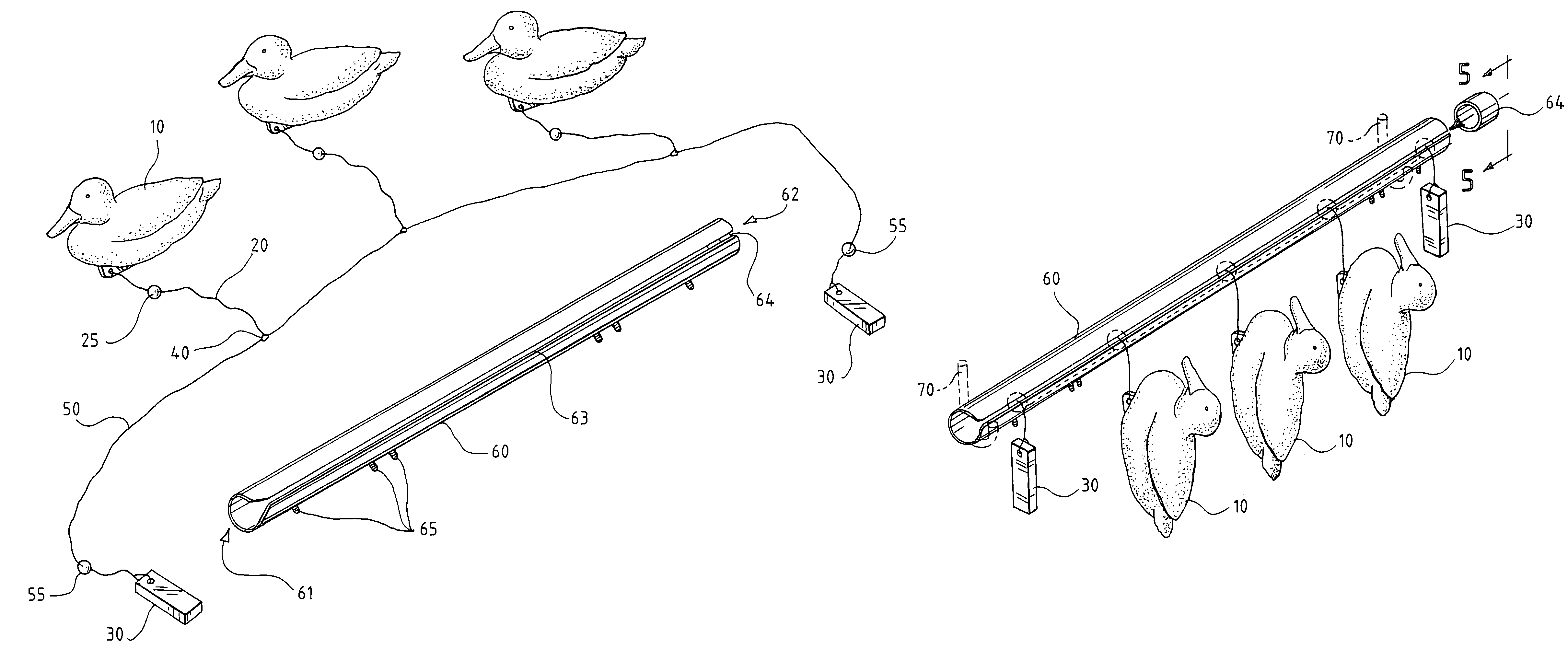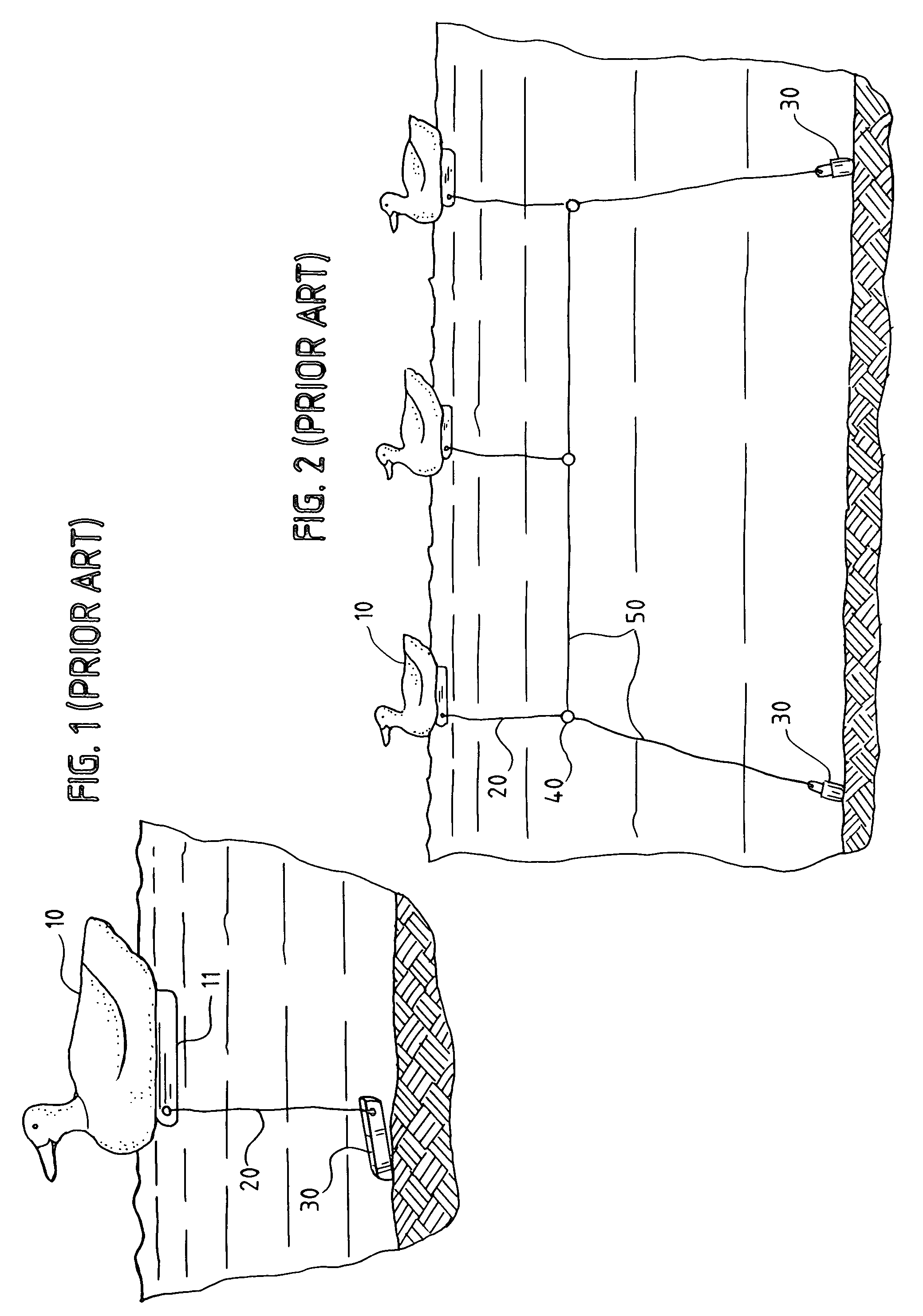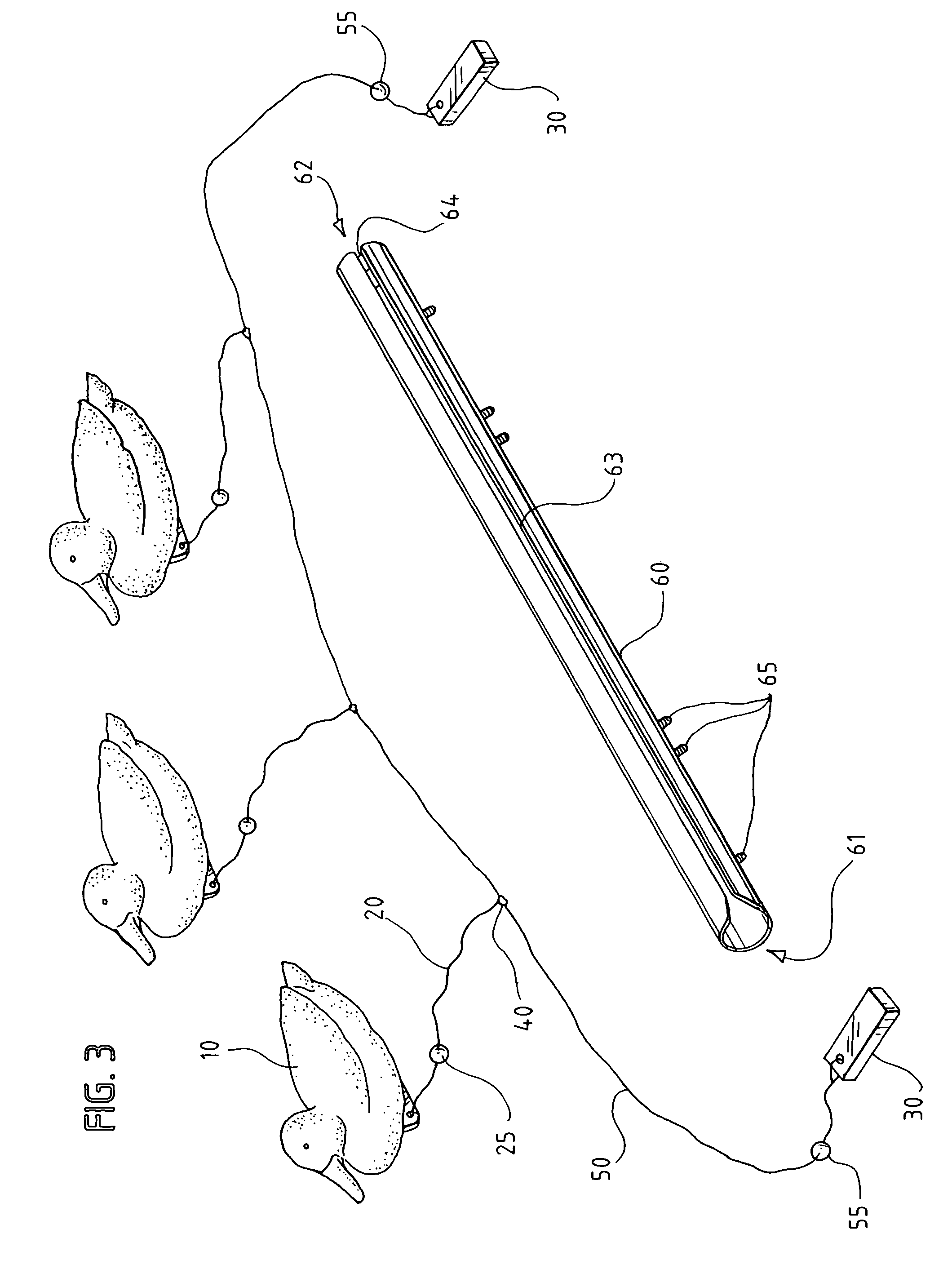Decoy system
a decoy and system technology, applied in the field of decoys, can solve the problems of time-consuming process of placing and retrieving multiple decoy assemblies, and achieve the effects of reducing tangling of lines, facilitating the distance between individual decoys, and facilitating the placement and retrieval of decoys
- Summary
- Abstract
- Description
- Claims
- Application Information
AI Technical Summary
Benefits of technology
Problems solved by technology
Method used
Image
Examples
Embodiment Construction
[0016]This invention is best understood by reference to the drawings. Referring to FIG. 3, the decoy system of this invention comprises two major components. The first major component is a decoy assembly comprising a plurality of decoys 10, a plurality of decoy lines 20, two anchors 30, a plurality of connectors 40, and a main line 50. The second major component is a holder 60 for the decoy assembly. These components are discussed in detail below.
[0017]The decoys 10 are conventional. They are generally floating three-dimensional models of waterfowl having fittings on their underside, although non-floating field decoys are also suitable. Decoys are available from a large number of suppliers. Many hunters have their own decoys and prefer to use them with the rest of the decoy system of this invention. For this reason, the decoy system of this invention is generally sold without decoys. Accordingly, decoys need not be considered parts of the invention.
[0018]A decoy line 20 runs from ea...
PUM
 Login to View More
Login to View More Abstract
Description
Claims
Application Information
 Login to View More
Login to View More - R&D
- Intellectual Property
- Life Sciences
- Materials
- Tech Scout
- Unparalleled Data Quality
- Higher Quality Content
- 60% Fewer Hallucinations
Browse by: Latest US Patents, China's latest patents, Technical Efficacy Thesaurus, Application Domain, Technology Topic, Popular Technical Reports.
© 2025 PatSnap. All rights reserved.Legal|Privacy policy|Modern Slavery Act Transparency Statement|Sitemap|About US| Contact US: help@patsnap.com



